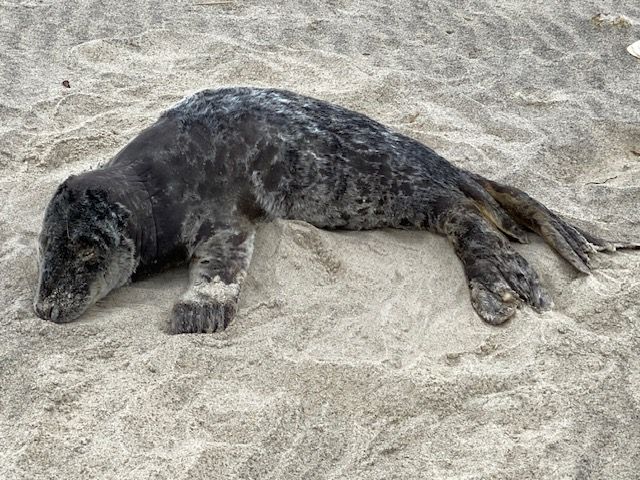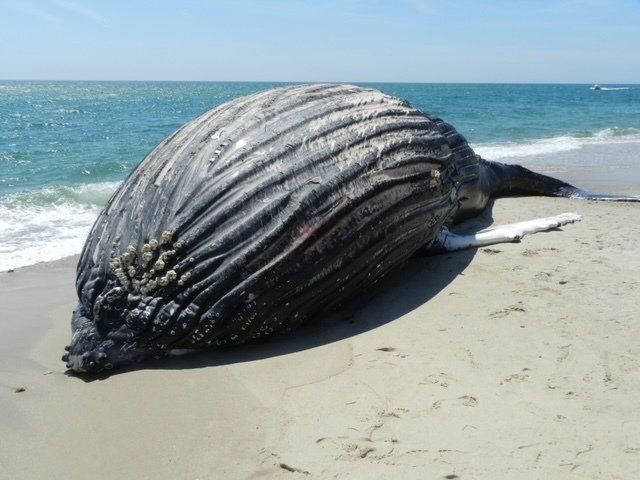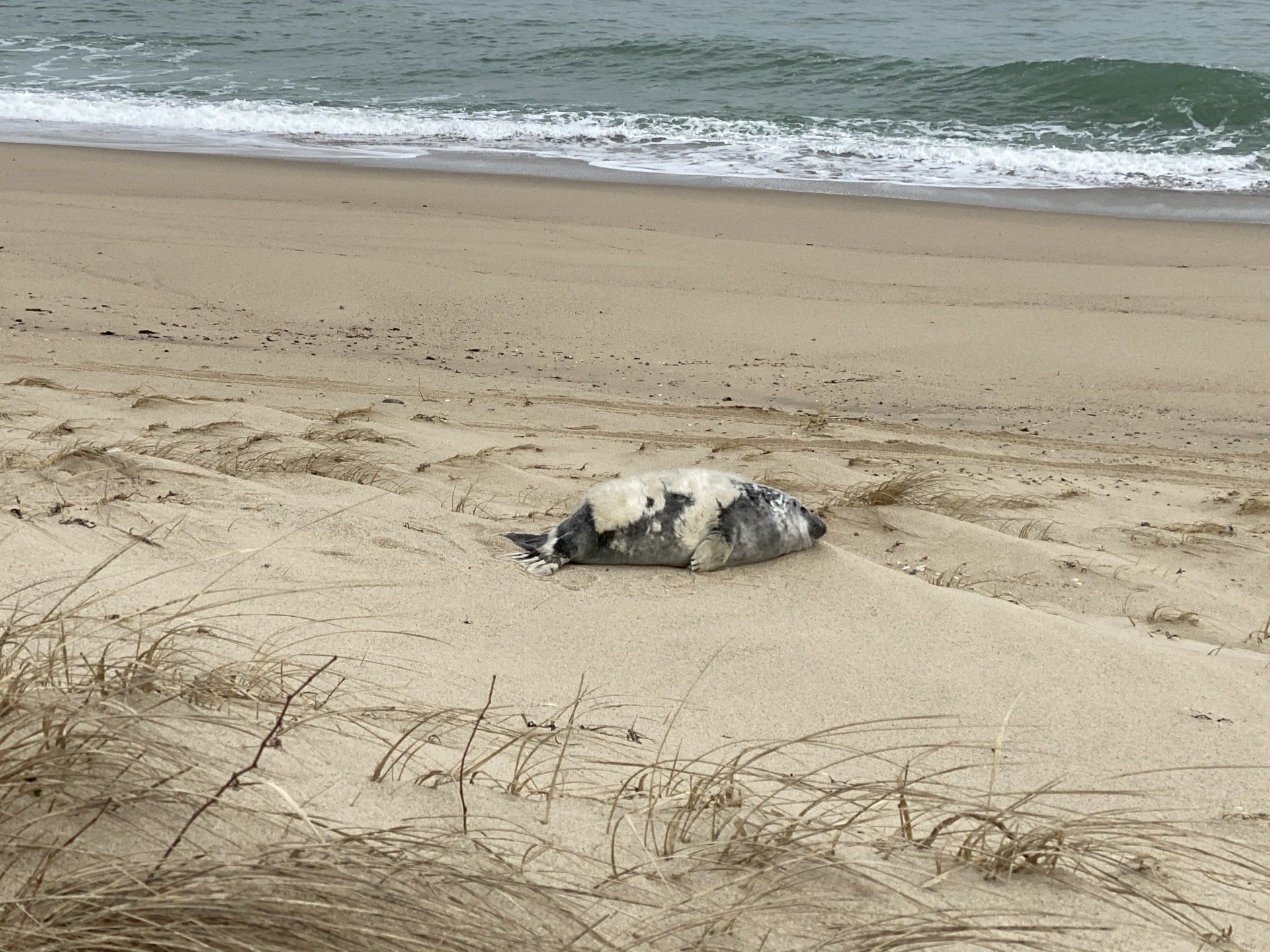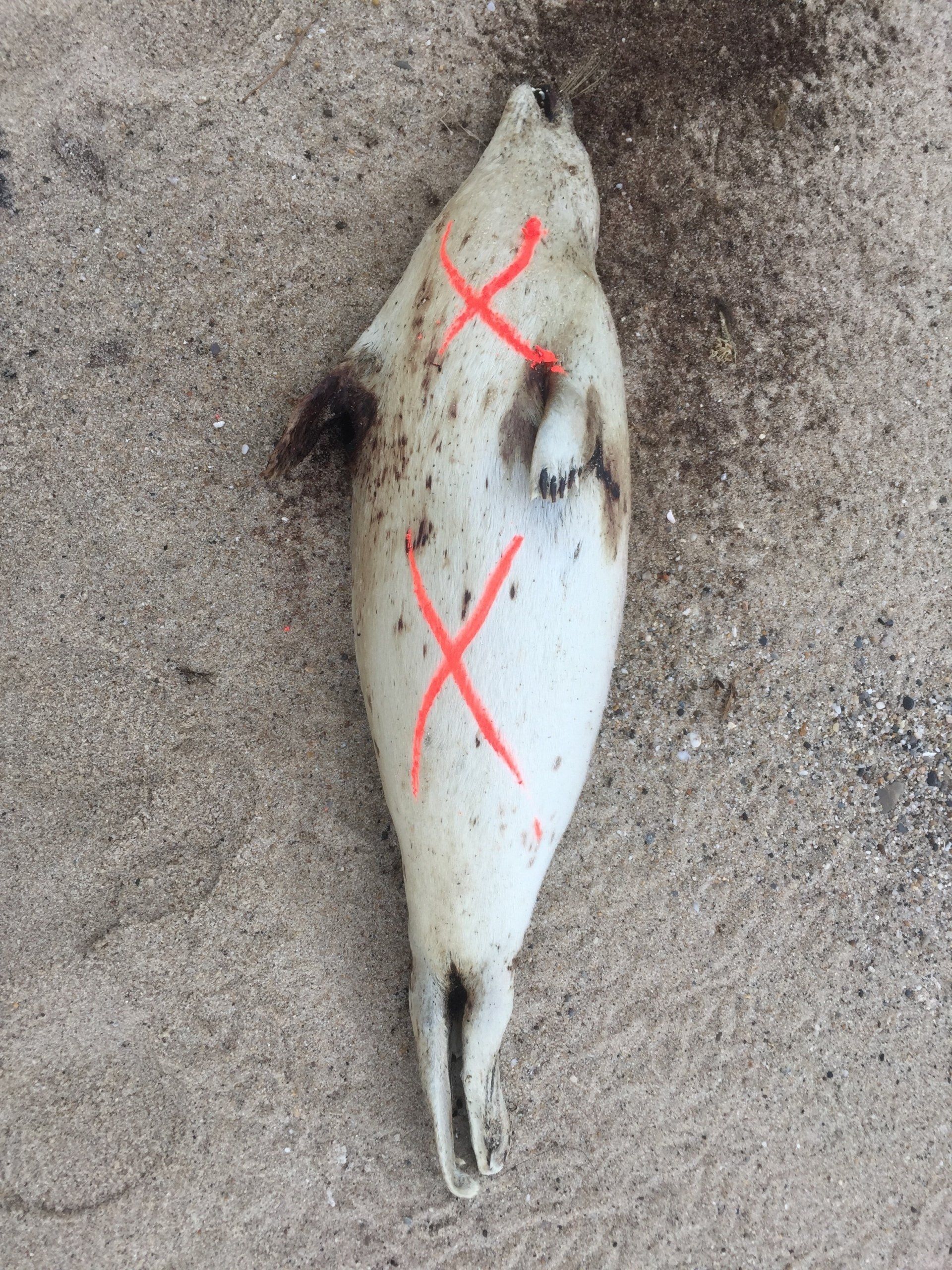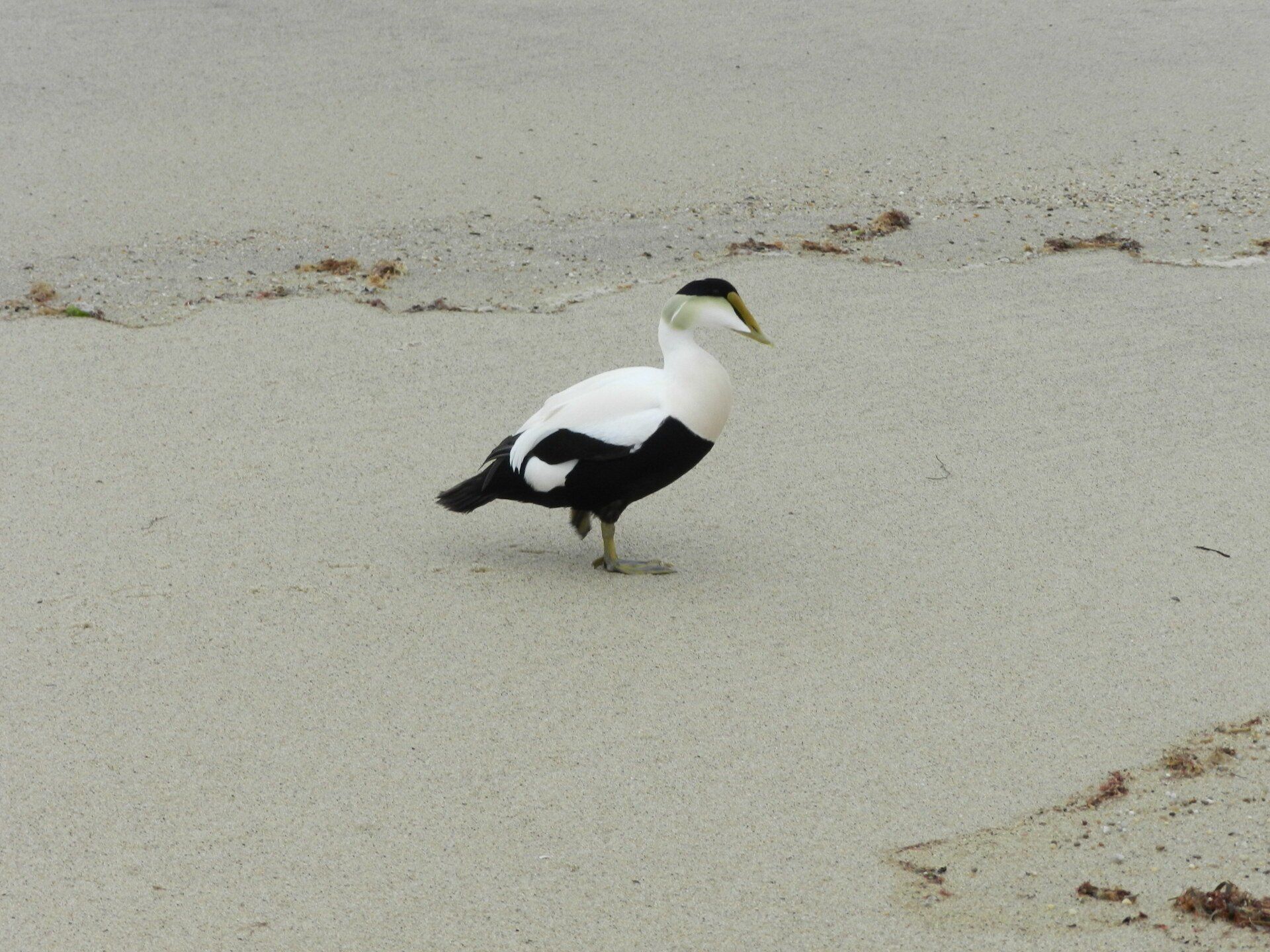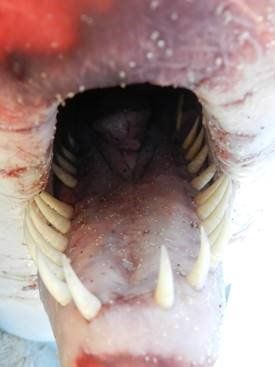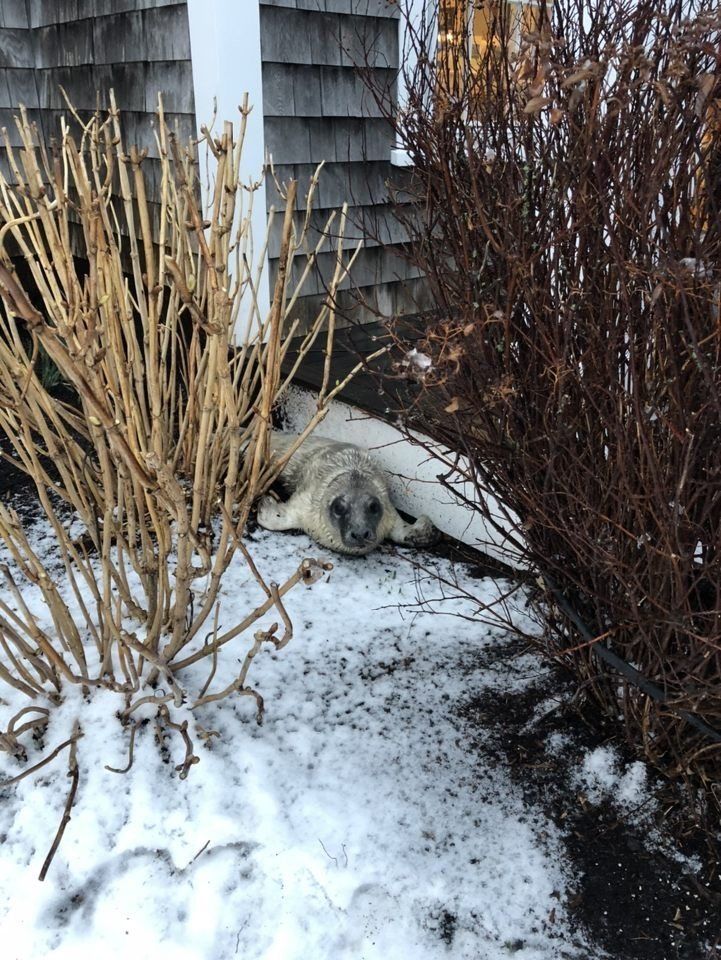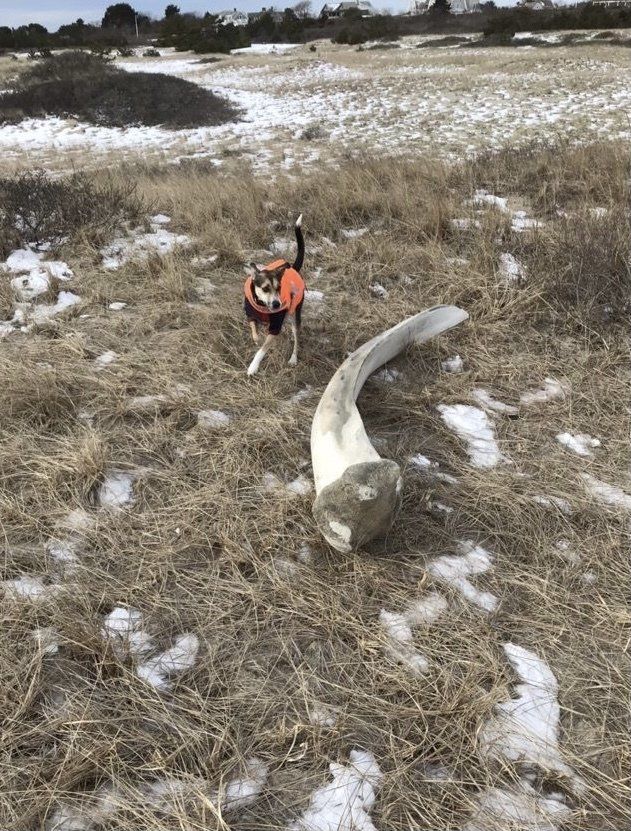By Stephen St. Pierre
•
May 6, 2024
Can you identify the small brown oblong structures on the skin between the two toes on the hind flipper of this gray seal? If you guess some type of warty growths, look closer. The one to the right of the scalpel blade handle has legs. Another guess might be fleas or ticks. As far as we know, pinnipeds don’t get ticks or fleas. Next you decide that the legs are a giveaway so you figure it has to be some type of insect or crustacean? With your great knowledge of whales, you recall that whales have lice, a type of crustacean, so you figure it has to be a crustacean like whale lice? Now you are half correct! In seals, lice are classified as insects and not crustaceans! Seal lice, Echinophthirius horridus, are one of the world’s few true insects that have adapted to survive in a marine environment. If your response is “What’s the big deal? Insects are everywhere on this planet," think again and name a few true marine insects for me. I never gave this question much thought either, but consider that the oceans occupy over 90% of the living space on this planet? Why are there so few insects there? Besides a few water striders on the surface of a salt water marsh or possibly some insects with immature stages of their life cycle occurring underwater in a shallow salt pond, I would have had to consult an entomologist for an answer. So, what went on here? What led seal lice, one of the many insects in the history of the world to adapt to this amphibious marine lifestyle? Studies by paleobiologists have concluded that when the ancestral pinnipeds first entered the oceans and transitioned to seals about 45 million years ago, their attached terrestrial lice not only went along for the ride, but they also had to adapt or perish to this changing environment. Not an easy feat! Consider the challenges that these lice had to make in order to be successful insects in the ocean: 1. They needed an ability to tolerate the high salinity of the marine environment. 2. They had to tolerate the great hydrostatic pressures placed upon them during their hosts deep ocean dives. 3. Their tolerance of the very cold temperatures during winter when their host hauled out on land or on those frigid deep underwater dives of hundreds of feet was required. 4. They needed a method of dealing with long periods of hypoxia (low oxygen levels) when under water for weeks to months at a time when their pinniped host was at sea. 5. Their anatomical development of an efficient means of being able to hold fast to a seal’s hair while underwater was required to prevent them from being dislodged and certainly lost at sea. Hooked claws developed at the end of each appendage to achieve this ability to hold on, especially against the drag forces exerted upon them when the host would swim at speeds of 18km/hr. 6. Seal lice had to also learn to synchronize their reproductive cycle with the periods of time that a seal hauled out on the beach to give birth, nurse and reproduce. 7. During all these adaptations, the lice have still found the time to become or retain their ability to be vectors of disease. Because E. horridus sucks blood from their host, a common mode of vector borne disease transmission, researchers have looked inside lice and found the immature third stage larvae of the seal heartworm, Acanthocheilonema spirocauda and concluded that seal lice are the intermediate host of the parasite. Other interesting louse bearing molecular finds are the presence of Anaplasma phagocytophilium (a rickettsial organism that infects people, domestic dogs and others), Mycoplasma phocacerebrale (the cause of Seal Finger in people), and Bartonella henselae (the cause of Cat Scratch Fever) in addition to other infectious agents. At this time it is unknown whether seal lice can transmit those infectious agents to other seals.

